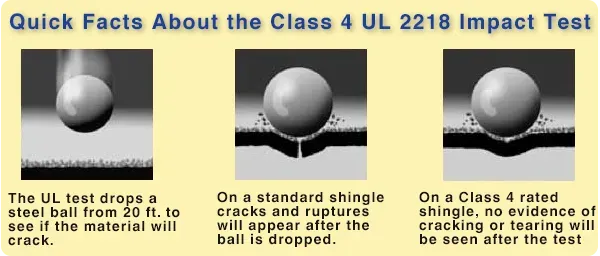Why Your Roof Warranty Might Not Cover What You Think
TLDR;
Your roof warranty might not cover what you expect because most warranties exclude storm damage, poor installation, lack of maintenance, or unauthorized
repairs. Many Texas homeowners assume full coverage, but fine print, prorated terms, and strict maintenance requirements often leave them paying out of pocket when problems arise. Always read the terms, register properly, and work with certified contractors like The Amish Roofer to protect your investment.
What a Roof Warranty Really Means
A roof warranty is a promise, not an all-inclusive protection plan. It defines specific issues that a manufacturer or contractor agrees to fix, not every problem that may occur.
There are two main types of roof warranties:
- Manufacturer or Material Warranty – Covers defects in shingles, flashing, or other roofing materials.
- Workmanship Warranty – Covers installation quality and errors made by your contractor.
Texas homeowners need to understand both. Extreme weather, high UV exposure, and temperature shifts stress materials and test installation quality.
The Amish Roofer sees many cases where customers assume their warranty protects against all damage, only to learn it covers far less than expected.
What Roof Warranties Are Supposed to Cover
Most standard roof warranties promise coverage for:
- Material defects – Cracking, blistering, or premature granule loss on shingles.
- Premature failure – When the roofing system fails earlier than its expected lifespan.
- Installation defects – If covered under a workmanship warranty from the contractor.
Some manufacturers offer extended or full-system warranties if your roof is installed by a certified contractor like The Amish Roofer. These warranties often require using only approved materials and following exact specifications.
What Roof Warranties Often Do Not Cover
This is where most homeowners are caught off guard. Many warranty exclusions and conditions drastically limit coverage.
Common exclusions include:
- Storm damage – Hail, wind, and lightning are usually excluded, even though they are common in Texas.
- Improper installation – If the roof was not installed to manufacturer specifications, coverage is void.
- Unauthorized repairs – Any work performed by a non-certified contractor or homeowner voids the warranty.
- Poor ventilation – Overheating or moisture buildup due to inadequate ventilation is not covered.
- Neglect or lack of maintenance – Failure to clean gutters, inspect flashing, or fix minor issues leads to claim denial.
- Improper cleaning – Pressure washing or using harsh chemicals can void material warranties.
Even if your roof warranty uses words like “lifetime,” it does not mean forever or full coverage.
The Truth About “Lifetime” Roof Warranties
“Lifetime” often means the expected life of the roofing material under normal use, or the lifetime of the original homeowner.
Key differences to know:
- Non-prorated coverage – Full coverage for a limited time (often the first 5–10 years).
- Prorated coverage – After that period, the value decreases over time. You might only get a fraction of the repair cost.
- Labor coverage – Some warranties only cover materials, not labor, which can double your out-of-pocket cost.
The Amish Roofer explains to clients that “lifetime” is a marketing term. Always check how long full coverage lasts and when the prorated period begins.
Why Roof Warranties Commonly Fail in Texas
Texas homeowners face unique conditions that strain roofing systems and affect warranty claims.
- Hail and wind storms cause widespread damage that warranties typically exclude.
- Intense heat leads to material expansion and contraction, which can cause early wear.
- Sudden temperature drops can crack shingles or cause leaks.
- Heavy rainfall can expose weak flashing or sealant.
Because of these factors, warranty claims in Texas are often denied. Insurance, not the warranty, usually covers storm damage.
The Amish Roofer advises homeowners to use warranties as one layer of protection, not a
replacement for proper maintenance and homeowners insurance.
Reading Your Roof Warranty: A Step-by-Step Guide
To understand your actual coverage, take the time to read your warranty carefully.
- Check registration requirements – Some manufacturers require registration within a specific period after installation.
- Review coverage periods – Find the non-prorated and prorated timelines.
- Understand what’s covered – Separate material coverage from workmanship.
- Read exclusions – Pay attention to weather damage, neglect, and modification clauses.
- Confirm transferability – If you plan to sell your home, check whether coverage transfers to the new owner.
- Keep documentation – Save receipts, inspection reports, and registration confirmation.
Without proper records, your claim might be denied even if the issue qualifies.
How to Preserve and Maximize Your Roof Warranty
Once your roof is installed, maintaining your warranty is about prevention and documentation.
Follow these steps to keep your coverage valid:
- Hire a certified contractor like The Amish Roofer for all roof-related work.
- Schedule annual inspections to identify early signs of wear or damage.
- Keep gutters and downspouts clear to prevent water buildup.
- Trim trees to reduce debris and prevent branch impact.
- Avoid unauthorized modifications such as installing solar panels or satellite dishes without approval.
- Store all maintenance records to prove you upheld your obligations.
These small actions protect both your roof and your warranty value.
What Voids a Roof Warranty
Understanding what voids your roof warranty helps prevent unintentional mistakes.
Common reasons include:
- Using non-approved materials.
- Skipping required maintenance.
- Performing DIY repairs.
- Failing to register the warranty.
- Allowing another contractor to alter the roof.
The Amish Roofer emphasizes that most warranty denials result from improper documentation or failure to follow maintenance guidelines, not manufacturing defects.
Roof Warranty vs Homeowner Insurance
Many people confuse warranty coverage with insurance coverage, especially when it comes to home warranty roof coverage. They serve different purposes.
- Roof warranty – Protects against manufacturing or installation defects.
- Homeowner insurance – Covers external damage from storms, fire, or falling objects.
If hail damages your shingles, your insurance should cover it, not your warranty. If your shingles curl due to poor installation, the workmanship warranty applies.
Having both provides complete protection. Without understanding the difference, you risk paying for repairs twice.
Transferability of Roof Warranties
If you plan to sell your home, check your warranty’s transferability clause.
Some warranties are transferable once, often within a limited time frame after the sale. Others require a transfer fee or re-registration.
A transferable warranty adds value to your property. But failing to follow transfer procedures can void coverage for the next owner.
When installing a new roof, ask The Amish Roofer for warranty options with clear transfer terms.
The Role of Certified Contractors
Manufacturer warranties are often valid only if installed by a certified or approved contractor.
Certified installers follow exact specifications for materials, flashing, underlayment, and ventilation. This reduces the chance of installation-related defects.
The Amish Roofer works with top roofing manufacturers and provides both manufacturer and workmanship warranties, ensuring your investment is protected from both ends.
Hiring uncertified contractors can save upfront costs but risks warranty invalidation and future repair expenses.
What to Do When Your Roof Warranty Won’t Help
If your warranty claim is denied or does not apply to the issue, there are still steps you can take:
- Check your homeowner’s insurance for storm or impact coverage.
- Contact the manufacturer to confirm eligibility for partial coverage.
- Ask your contractor for inspection records and installation proof.
- Request an appeal if you believe your claim was wrongfully denied.
- Plan for repairs through certified service providers to avoid future issues.
The Amish Roofer helps customers navigate these steps and verify whether the issue stems from material,
installation, or environmental causes.
Questions to Ask Before Signing a Roofing Contract
Before installation, clarify warranty details with your contractor. Ask these questions:
- What type of warranty is included, and how long does it last?
- Is the warranty prorated or non-prorated?
- Are storm damages excluded?
- Is the warranty transferable?
- Who handles registration?
- What maintenance is required to keep it valid?
- Does it cover labor or materials only?
- How are warranty claims processed?
These questions help avoid future disputes and ensure you understand your coverage.
What Texas Homeowners Should Remember
Texas homeowners face unique climate conditions, which means reading the fine print is essential.
- Heat, UV exposure, and storms accelerate wear.
- Warranties rarely cover weather damage.
- Maintenance and inspections are mandatory to keep coverage valid.
- Certified contractors are key to extended or full-system warranties.
The Amish Roofer advises customers to review both manufacturer and workmanship warranties before installation. Combining proper installation, insurance, and maintenance gives your roof the longest life and the best protection.


